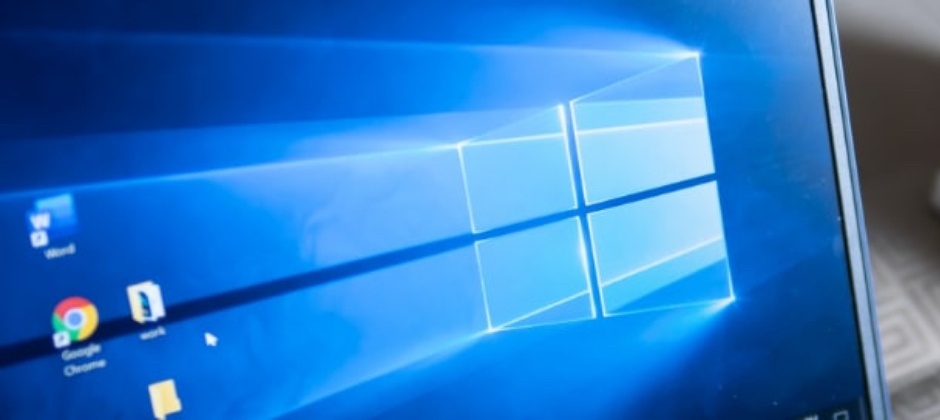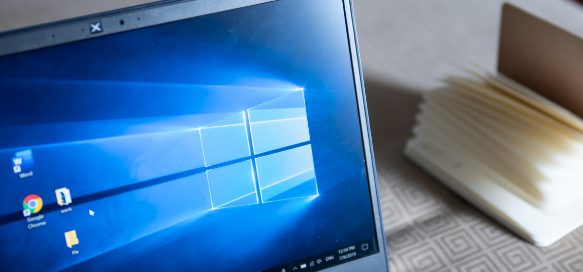
Just because your Windows 10 PC is not performing as well as it used to doesn’t mean that the time has come to replace it. A couple of hardware and software tweaks may be enough to restore it back to its former glory and extend its lifespan by a few years.
While there are many Windows 10 performance optimization tips that we could describe, we decided to limit ourselves to those that are completely safe and deliver measurable results.
1. Upgrade to a Solid-State Drive (SSD)
Traditional spinning hard drives (HDDs) offer a maximum data transfer rate of about 100–200 MB/s. That’s nothing compared with the latest NVMe SSDs, whose data transfer rate is measured in gigabytes per second. Even regular SATA SSDs are considerably faster than HDDs, especially when manipulating a large number of small files.
By upgrading your Windows 10 PC to an SSD, you can expect your boot time to decrease substantially, and the system should become much more responsive. Just make sure to buy an SSD with sufficient storage capacity because you should always have around 20 percent of free space on your drive to achieve the best performance possible.
2. Get More RAM
RAM has become very affordable over the years, and buying and extra memory stick or two is one of the most guaranteed ways to make any PC faster. You can follow the steps below to determine if you have enough RAM:
- Launch all applications you typically keep open, such as your web browser, Word, and instant messenger.
- Press CTRL + ALT + DEL and select the Task Manager option.
- Switch to the Performance tab and click Memory from the left pane.
Ideally, you want your memory usage to be under 80 percent. For most Windows 10 users, that means having at least 16 GB of memory installed. If you have less than that, all you need to do to add more is to buy a compatible memory module and insert it into any available slot on the motherboard.
3. Prevent Applications from Launching Automatically
Windows 10 makes it possible for applications to launch automatically at startup. When this feature is used sparingly, it improves the overall user experience by making applications more responsive. But when used too much, it can cause the operating system to be sluggish.
Fortunately, preventing applications from launching automatically at startup is easy:
- Open the Start menu and choose Settings.
- Select Apps and select the Startup option from the left pane.
- Disable all applications that you don’t want to start automatically when you first log in.
Windows 10 displays the estimated performance impact next to each application, and you should take this information into consideration when deciding which applications to disable.
4. Disable Unnecessary Background Apps
Universal Windows Platform (UWP) apps, which include all apps available in the Microsoft Store, can run in the background to receive information, send notifications, and stay up-to-date even when they’re not in use. To increase the performance of your Windows 10 PC, you should disable all unnecessary background apps using these steps:
- Open the Start menu and choose Settings.
- Select Privacy and select the Background apps located in the left pane.
- Disable all background apps that you don’t use.
Alternatively, you can turn off the Let apps run in the background toggle switch to completely prevent UWP apps from eating up your hardware resources and making your computer slower. Just keep in mind that some apps may start to behave strangely.
5. Ensure That TRIM Is Enabled for Your SSD
Before new data can be written to an SSD, the available storage space must first be erased, which takes some time. Modern SSDs overcome this limitation of SSD technology with the so-called TRIM command. When enabled, this command automatically erases the storage space occupied by a deleted file, making subsequent write operations faster.
To check if TRIM is enabled on your system:
- Open the Start menu and type “cmd.”
- Choose to run the Command Prompt as administrator.
- Enter the following command and press Enter: fsutil behavior query DisableDeleteNotify
If you see DisableDeleteNotify = 0, then it means that TRIM is enabled, and you’re all good. But if you see DisableDeleteNotify = 1, TRIM is disabled, and you should enable it using the command below:
fsutil behavior set DisableDeleteNotify 0
The only downside of enabling TRIM is that it makes it impossible to use data recovery software to recover permanently deleted files that are no longer present in the Recycle Bin. That said, privacy- and security-oriented individuals may see this as an advantage.
6. Use the High Performance Power Plan
When using Windows 10 on a laptop, users can choose between three different power settings:
- Power saver: Saves energy by reducing the computer’s performance where possible.
- Balanced: Automatically balances performance with energy consumption on capable hardware.
- High performance: Favors performance, but may use more energy.
You can access these settings from the classic Control Panel, by going to Hardware and Sound > Power Options.
Whenever you need an instant performance boost at the expense of energy efficiency, you can switch to the high performance power plan by clicking the down arrow next to Hide additional plan and checking the corresponding checkbox.
7. Turn Off Windows Search Indexing
To help users quickly find documents, emails, and other content stored on the hard drive, Windows 10 is constantly cataloging stored data using the Windows Search Indexing service. On modern PCs with fast SSDs and highly capable multi-core CPUs, the performance impact of this service is negligible, but the same can’t be said about older computers.
The good news is that the Windows Search Indexing service can be completely turned off. Here’s what you need to do to change its behavior:
- Open the Start menu and type “services.”
- Launch the Services app and scroll down until you find a service called Windows Search.
- Double-click on the service to open its properties.
- Click the drop-down menu next to Startup type and select Disabled.
- You can also click the Stop button to immediately turn off indexing.
With Windows Search Indexing disabled, you can expect your searchers to be slower, but the overall performance of your system should improve.
Conclusion
With these seven Windows 10 performance optimization tips, you should be able to achieve a significant boost in performance and make your sluggish PC feel new again. But if you still feel that your computer is holding you back, then it’s probably the time to replace it with a new one. If you ever need assistance on this process, feel free to contact us for more information.

